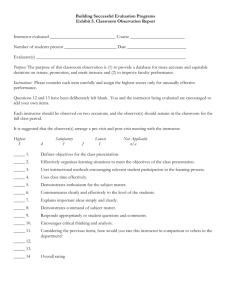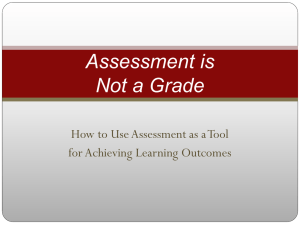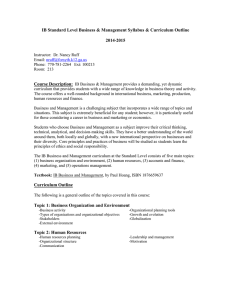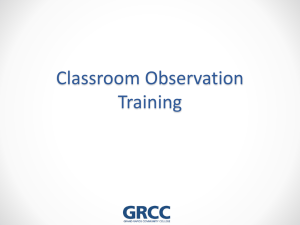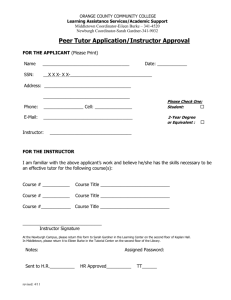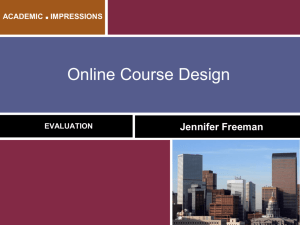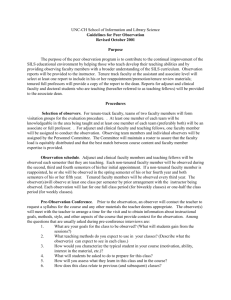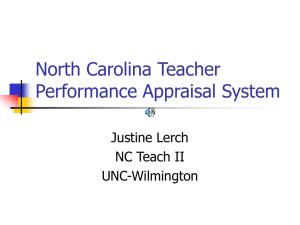class-observation-workshop - California State University, East Bay
advertisement
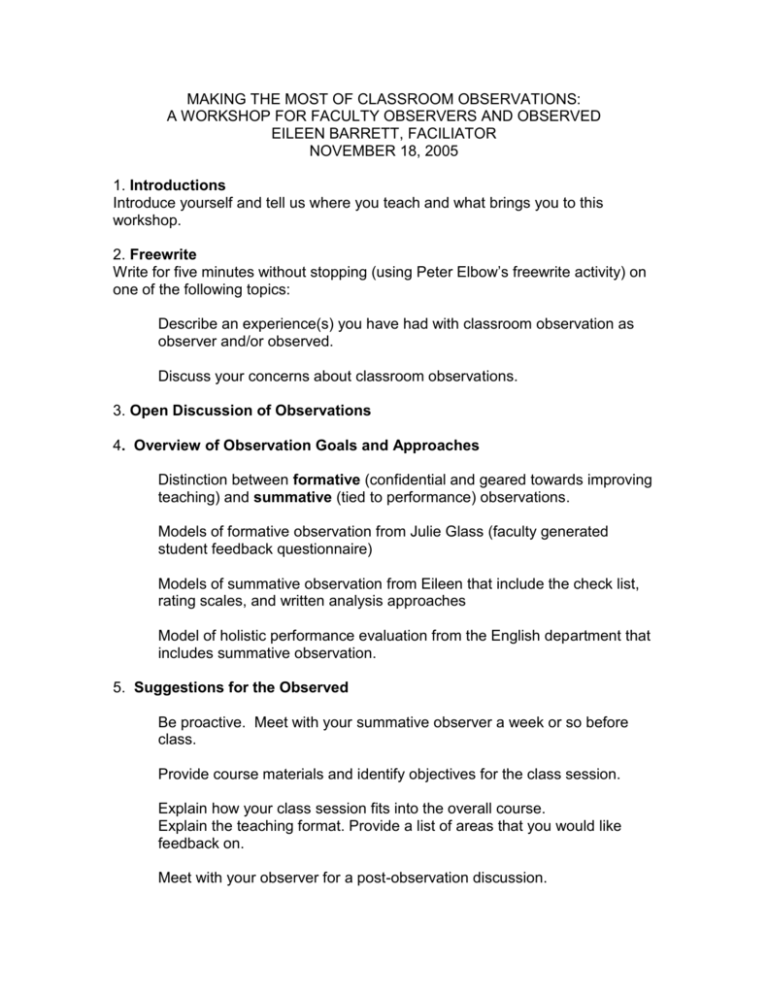
MAKING THE MOST OF CLASSROOM OBSERVATIONS: A WORKSHOP FOR FACULTY OBSERVERS AND OBSERVED EILEEN BARRETT, FACILIATOR NOVEMBER 18, 2005 1. Introductions Introduce yourself and tell us where you teach and what brings you to this workshop. 2. Freewrite Write for five minutes without stopping (using Peter Elbow’s freewrite activity) on one of the following topics: Describe an experience(s) you have had with classroom observation as observer and/or observed. Discuss your concerns about classroom observations. 3. Open Discussion of Observations 4. Overview of Observation Goals and Approaches Distinction between formative (confidential and geared towards improving teaching) and summative (tied to performance) observations. Models of formative observation from Julie Glass (faculty generated student feedback questionnaire) Models of summative observation from Eileen that include the check list, rating scales, and written analysis approaches Model of holistic performance evaluation from the English department that includes summative observation. 5. Suggestions for the Observed Be proactive. Meet with your summative observer a week or so before class. Provide course materials and identify objectives for the class session. Explain how your class session fits into the overall course. Explain the teaching format. Provide a list of areas that you would like feedback on. Meet with your observer for a post-observation discussion. Work with a peer on informal observations or faculty development on formative observations. Ask your students for anonymous feedback on your teaching: which aspects of the course are helping you learn, which aspects are not helping you, how could the course be improved to enhance your understanding of the course material? 6. Suggestions for the Observer Meet with the instructor before class. Read the course syllabus and other available materials. Discuss the goals for the class session. Ask how the instructor would like to handle your presence—should you be introduced or not, for example. Make a check of things to look for before the class session to help you stay focused. Arrive to class a few minutes early. Consider the physical setting (can students see, hear, and understand the instructor and the materials she or he is using?). Look for the instructor’s organization, clarity of presentation, rapport with students, teaching and learning format, time on tasks, and range of activities. Look for evidence of students’ engagement such as participation in discussion, note taking, active group work. questions. Take extensive notes throughout. If helpful divide your notes between students and instructor. Meet for a post-observation session with the instructor. Attached Sources “Preparing for Peer Observation: A guidebook.” Prepared by the Center for Teaching Effectiveness. The University of Texas, Austin. http://www.utexas.edu/academic/cte/PeerObserve.html Report of Classroom Observation. P. Seldin. Changing Practices in Faculty Evaluation. Questions for Written Analysis. Classroom Teaching Observation. E. Porter. Journal of Staff, Program, and Organization Development. Questions for Rating Scale and Written Analysis. Classroom Observation Worksheet. J. Centra. A Guide for Evaluating Faculty for Promotion and Tenure. Checklist, Rating Scale and Questions for Analysis.
